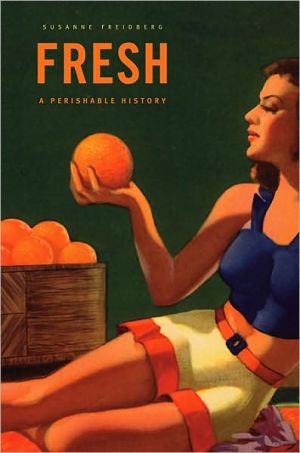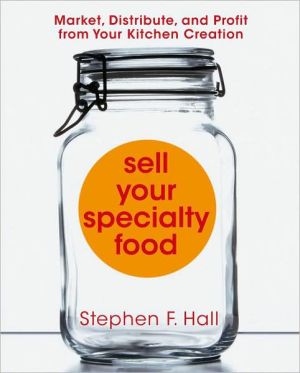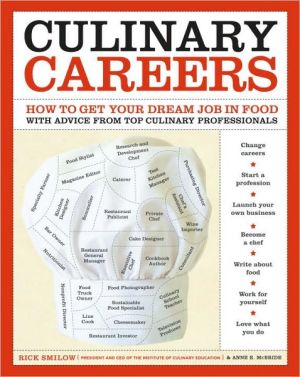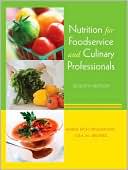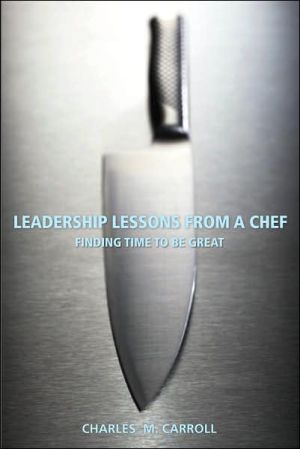Fresh: A Perishable History
That rosy tomato perched on your plate in December is at the end of a great journey—not just over land and sea, but across a vast and varied cultural history. This is the territory charted in Fresh. Opening the door of an ordinary refrigerator, it tells the curious story of the quality stored inside: freshness.\ We want fresh foods to keep us healthy, and to connect us to nature and community. We also want them convenient, pretty, and cheap. Fresh traces our paradoxical hunger to its roots in...
Search in google:
That rosy tomato perched on your plate in December is at the end of a great journey—not just over land and sea, but across a vast and varied cultural history. This is the territory charted in Fresh. Opening the door of an ordinary refrigerator, it tells the curious story of the quality stored inside: freshness. We want fresh foods to keep us healthy, and to connect us to nature and community. We also want them convenient, pretty, and cheap. Fresh traces our paradoxical hunger to its roots in the rise of mass consumption, when freshness seemed both proof of and an antidote to progress. Susanne Freidberg begins with refrigeration, a trend as controversial at the turn of the twentieth century as genetically modified crops are today. Consumers blamed cold storage for high prices and rotten eggs but, ultimately, aggressive marketing, advances in technology, and new ideas about health and hygiene overcame this distrust.Freidberg then takes six common foods from the refrigerator to discover what each has to say about our notions of freshness. Fruit, for instance, shows why beauty trumped taste at a surprisingly early date. In the case of fish, we see how the value of a living, quivering catch has ironically hastened the death of species. And of all supermarket staples, why has milk remained the most stubbornly local? Local livelihoods; global trade; the politics of taste, community, and environmental change: all enter into this lively, surprising, yet sobering tale about the nature and cost of our hunger for freshness. Janet Majure - foodperson.com Fascinating and meticulously documented...Even as some of us beat a path to the farmers market or CSA, the history [Freidberg] describes affects the selections available and their path to our refrigerator. She gives us much to ponder and presents it in a highly readable volume largely devoid of value judgments. I learned a lot. Give it a read. It will indeed give you a fresh look at your food.
Introduction Refrigeration: Cold Revolution Beef: Mobile Meat Eggs: Shell Games Fruit: Ephemeral Beauty Vegetables: Hidden Labor Milk: Border Politics Fish: Wild LifeEpilogueNotesBibliographyAcknowledgmentsIndex
\ The Guardian[A] meticulously researched social history of our relationship with perishable food.\ — P.D. Smith\ \ \ \ \ \ Wall Street JournalFreidberg—tracking the movement of beef, eggs, fruit, vegetables, milk and fish from source to table—shows how technology, abetted by modern public relations, has changed the way we eat...Freidberg writes with wit and clarity, and her sense of humor extends to her choice of illustrations.\ — Aram Bakshian Jr.\ \ \ \ Washington TimesFew can read this thought-provoking book without thinking that although the benefits of modern food production are real, they are bought at an extravagant price. We could, if we tried, be more sensible in our demands on farmers, more resistant to the lures of advertisers, more thoughtful about the origins of our food, and more alert to the effects food production has on the environment and the people who produce it. Ms. Freidberg's book is a good place to start because it unravels the tangle of science and economics that puts food on our tables. Readers will find that the word "fresh" will never be quite the same again.\ — Claire Hopley\ \ \ \ \ \ foodperson.comFascinating and meticulously documented...Even as some of us beat a path to the farmers market or CSA, the history [Freidberg] describes affects the selections available and their path to our refrigerator. She gives us much to ponder and presents it in a highly readable volume largely devoid of value judgments. I learned a lot. Give it a read. It will indeed give you a fresh look at your food.\ — Janet Majure\ \ \ \ \ \ The AtlanticA dietary-cum-social history of the Mark Kurlansky/Michael Pollan sort, this smart, sweeping, and timely volume—appearing at a moment when buying locally and eating organically are fashionably responsible quests—considers the conundrums of industrial freshness. According to Freidberg, a Dartmouth professor, we all crave access to healthful, seasonal foodstuffs, yet we hunger equally for year-round convenience and value. The result: to open a refrigerator is to access a Pandora's box of compromise and freighted trade. Cold storage, Freidberg argues, has altered tastes, damaged the environment, hurt the consumer, and helped facilitate the less-than-salutary shift from localism to globalism. The stories of six staples—beef, eggs, fruit, vegetables, milk, and fish—both reinforce her thesis and stand as discretely engaging narratives, each rendered with clarity and flair. Food, truly, for thought.\ \ \ \ \ \ NatureIn Fresh, Susanne Freidberg chronicles how expectations about beef, fish, milk, eggs, fruit and vegetables have shifted over the past century. Freshness means more than the absence of biochemical decay. It is bound up with our notions of purity, nutrition and beauty. And these ideas have adapted to the rise of a technology that most of us now take for granted—refrigeration.\ — Jascha Hoffman\ \ \ \ \ \ popmatters.comSix categories of food are placed under the microscope in this survey of shifting cultural values. Beef, eggs, vegetables, fruit, milk, and fish are each examined in Freidberg's extensively researched and engagingly written account.\ — Lara Killian\ \ \ \ \ \ rachellaudan.comAll in all fascinating and clear evidence for the protean nature of freshness... By the end of the book, the reader is acutely aware of the point that [Freidberg] reinforces in her brief epilogue, namely that freshness comes at a price, that there is no utopia of freshness, and that the ability to enjoy fresh foods is a privilege of the wealthy parts of the world...For anyone who is interested in figuring out the basic ideas that inspire contemporary eating and food production, Fresh is essential reading.\ — Rachel Laudan\ \ \ \ \ \ Times Higher EducationFrench fruit farmers, Argentine cattle ranchers, Mexican dairy farmers hidden from view in pastoral Vermont and Hong Kong seafood aficionados all enter into this lively and edifying account. The book includes a sweeping survey of how ideas of freshness vary culturally, but have invariably been influenced by urbanization and globalization—and by technological innovations that preserve the illusion of straight-from-the-source freshness...It is a lively, engaging book.\ — Prashanth A K\ \ \ \ \ \ The GuardianFresh paints a fascinating picture of our changing views of perishable food...It is the historical detail of Fresh that throws so much light on why we now eat the way we do...Freidberg writes elegantly and goes beyond the technical to draw out this paradox at the heart of today's culture of consumption: we have ended up with a food system that promotes both novelty and nostalgia, obsolescence and shelf life, indulgence and discipline.\ — Felicity Lawrence\ \ \ \ \ Wall Street JournalFreidberg--tracking the movement of beef, eggs, fruit, vegetables, milk and fish from source to table--shows how technology, abetted by modern public relations, has changed the way we eat...Freidberg writes with wit and clarity, and her sense of humor extends to her choice of illustrations.\ — Aram Bakshian Jr.\ \ \ \ \ NatureIn Fresh, Susanne Freidberg chronicles how expectations about beef, fish, milk, eggs, fruit and vegetables have shifted over the past century. Freshness means more than the absence of biochemical decay. It is bound up with our notions of purity, nutrition and beauty. And these ideas have adapted to the rise of a technology that most of us now take for granted--refrigeration.\ — Jascha Hoffman\ \ \ \ \ The Guardian[A] meticulously researched social history of our relationship with perishable food.\ — P.D. Smith\ \ \ \ \ Times Higher EducationFrench fruit farmers, Argentine cattle ranchers, Mexican dairy farmers hidden from view in pastoral Vermont and Hong Kong seafood aficionados all enter into this lively and edifying account. The book includes a sweeping survey of how ideas of freshness vary culturally, but have invariably been influenced by urbanization and globalization--and by technological innovations that preserve the illusion of straight-from-the-source freshness...It is a lively, engaging book.\ — Prashanth A K\ \ \ \ \ Washington TimesFew can read this thought-provoking book without thinking that although the benefits of modern food production are real, they are bought at an extravagant price. We could, if we tried, be more sensible in our demands on farmers, more resistant to the lures of advertisers, more thoughtful about the origins of our food, and more alert to the effects food production has on the environment and the people who produce it. Ms. Freidberg's book is a good place to start because it unravels the tangle of science and economics that puts food on our tables. Readers will find that the word "fresh" will never be quite the same again.\ — Claire Hopley\ \ \ \ \ The AtlanticA dietary-cum-social history of the Mark Kurlansky/Michael Pollan sort, this smart, sweeping, and timely volume--appearing at a moment when buying locally and eating organically are fashionably responsible quests--considers the conundrums of industrial freshness. According to Freidberg, a Dartmouth professor, we all crave access to healthful, seasonal foodstuffs, yet we hunger equally for year-round convenience and value. The result: to open a refrigerator is to access a Pandora's box of compromise and freighted trade. Cold storage, Freidberg argues, has altered tastes, damaged the environment, hurt the consumer, and helped facilitate the less-than-salutary shift from localism to globalism. The stories of six staples--beef, eggs, fruit, vegetables, milk, and fish--both reinforce her thesis and stand as discretely engaging narratives, each rendered with clarity and flair. Food, truly, for thought.\ \ \ \ \ popmatters.comSix categories of food are placed under the microscope in this survey of shifting cultural values. Beef, eggs, vegetables, fruit, milk, and fish are each examined in Freidberg's extensively researched and engagingly written account.\ — Lara Killian\ \ \ \ \ foodperson.comFascinating and meticulously documented...Even as some of us beat a path to the farmers market or CSA, the history [Freidberg] describes affects the selections available and their path to our refrigerator. She gives us much to ponder and presents it in a highly readable volume largely devoid of value judgments. I learned a lot. Give it a read. It will indeed give you a fresh look at your food.\ — Janet Majure\ \ \ \ \ rachellaudan.comAll in all fascinating and clear evidence for the protean nature of freshness... By the end of the book, the reader is acutely aware of the point that [Freidberg] reinforces in her brief epilogue, namely that freshness comes at a price, that there is no utopia of freshness, and that the ability to enjoy fresh foods is a privilege of the wealthy parts of the world...For anyone who is interested in figuring out the basic ideas that inspire contemporary eating and food production, Fresh is essential reading.\ — Rachel Laudan\ \ \ \ \ Library JournalFreidberg (geography, Dartmouth Coll.) traces the history of fresh food and the methods and tools used to keep it that way. After an introduction on refrigeration, each of the following chapters addresses a separate kind of food (e.g., beef, eggs, fruits) and the human struggle to preserve and transport that food to those willing and able to buy it. Freidberg points out the inextricable link between food and the technology used to keep it fresh, so much so that people often define food as "fresh" by the technology used to prepare/preserve it, e.g., frozen or refrigerated strawberries, bagged spinach. While highlighting problems raised by the current global food economy (such as food-safety issues like the recent peanut product recalls caused by a salmonella outbreak), the author notes that the locavore and organic-food movements address certain problems but do not offer complete solutions. Recommended for midsize to large public libraries and all academic libraries.\ —Joshua Lambert\ \ \
